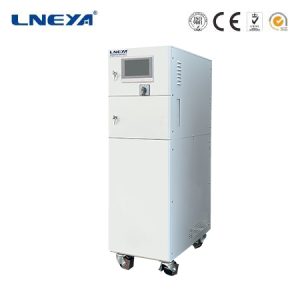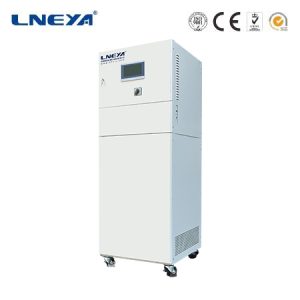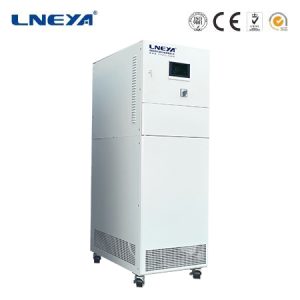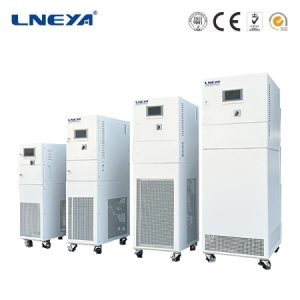High-Temperature Chiller: A Key Technology for Industrial Cooling
High-temperature chillers are specialized refrigeration systems that provide cooling capabilities in environments where ambient temperatures are high, making them crucial for industrial processes that require stable low-temperature conditions. These chillers are designed to operate at temperatures above the standard range of conventional chillers, ensuring efficient cooling even in warm climates or for applications that generate significant heat.

Working Principles of High-Temperature Chillers
The basic principle behind a high-temperature chiller involves a refrigeration cycle that removes heat from a process or space and transfers it to a cooling medium, such as air or water. The cycle typically includes a compressor, a condenser, an expansion valve, and an evaporator. The high-temperature, high-pressure vapor flows into the condenser where it releases heat to the surrounding environment, transforming into a high-pressure liquid. This liquid then moves through an expansion valve, which rapidly reduces its pressure and temperature. The low-pressure, low-temperature liquid enters the evaporator, where it absorbs heat from the substance or area being cooled, causing it to evaporate and turn back into a vapor. This cycle repeats continuously, ensuring a consistent transfer of heat from the desired location to the chiller, which then releases the accumulated heat into the environment.
Types of High-Temperature Chillers
There are several types of high-temperature chillers, each designed for specific applications and temperature ranges:
Air-Cooled Chillers: These use ambient air to reject heat from the refrigerant in the condenser, making them suitable for applications where discharged heat will not be an issue.
Water-Cooled Chillers: These use water from an external tower to cool the gaseous refrigerant in the condenser, providing higher efficiency and quieter operation than air-cooled chillers.
Vapor Compression Chillers: These use a compressor to pump refrigerant, extracting unwanted heat from a process. They are ideal for medium to large-scale cooling operations.
Vapor Absorption Chillers: These use a heat source to transport the refrigerant around the system for cooling, often using low Global Warming Potential (GWP) refrigerants.

Applications of High-Temperature Chillers
High-temperature chillers are used in a variety of applications where precise temperature control is essential:
Plastic Molding: In the plastics industry, chillers are used to cool molds and machinery, improving product quality and reducing production time.
Chemical Processing: They control the temperature of chemical reactions, ensuring optimal conditions for reactions and enhancing product quality.
HVAC Systems: In large commercial and industrial HVAC systems, high-temperature chillers help maintain comfortable indoor temperatures by cooling the water used in the system, especially in tropical climates where high chilled water temperatures can cut the air supply fan energy use by half.
Metal Finishing: These chillers ensure high-quality metal plating and chemical processes by providing precise control of temperature, which is necessary to avoid defects resulting from incorrect temperature regulation.
Benefits of High-Temperature Chillers
The use of high-temperature chillers offers several benefits, including:
Enhanced Efficiency: High-temperature chillers provide precise temperature control, which is essential for optimizing industrial processes and improving overall efficiency.
Extended Equipment Life: By maintaining optimal operating temperatures, these chillers help extend the lifespan of machinery and equipment, reducing maintenance and replacement costs.
Energy Savings: Modern high-temperature chillers are designed with energy efficiency in mind, using advanced technologies and high-efficiency components to minimize energy consumption, resulting in cost savings.

Improved Product Quality: In many manufacturing processes, temperature control is critical for ensuring the quality and consistency of products. Chillers help maintain the required temperature, thereby improving product quality.
Environmental Impact: Many high-temperature chillers are now equipped with eco-friendly refrigerants and energy-saving features, contributing to a reduced environmental footprint.
Industry Trends in High-Temperature Chillers
The global chillers market is projected to grow at a compound annual growth rate (CAGR) of 4.5% from 2024 to 2030, driven by the rising need for cost-effective and energy-efficient space cooling solutions in commercial and industrial sectors. The market is characterized by a high degree of product innovation, with many manufacturers developing chillers that use low GWP refrigerants, such as HFOs or natural refrigerants like CO2. Chiller systems are becoming more intelligent and energy-efficient with advancements in technology, offering features such as energy efficiency, expandability, compact design, low environmental impact, and wireless technology.
Conclusion
High-temperature chillers are indispensable in modern industry for their ability to provide precise temperature control in a variety of applications, from plastic molding to chemical processing. As technology advances, these chillers continue to evolve, offering improved efficiency, energy savings, and environmental benefits. Their role in supporting the dynamic demands of contemporary industrial processes is set to grow, ensuring that they remain a critical component of industrial cooling solutions.
 LNEYA
LNEYA
 简体中文
简体中文














































































